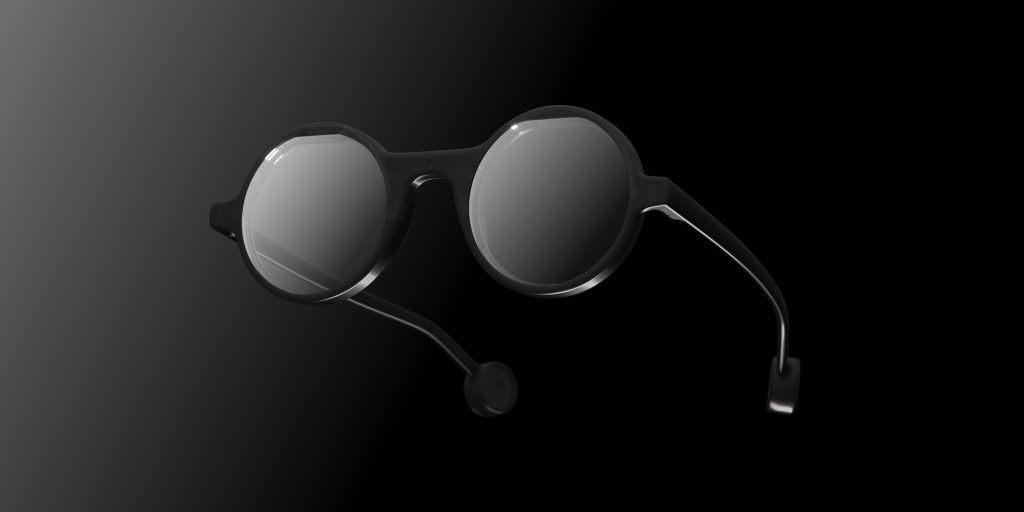Smart glasses have come a long way in recent years, evolving from clunky and awkward headsets to sleeker designs with valuable capabilities. One of the most promising new entrants aiming to unlock the full potential of functional smart eyewear is Frame – innovative AI-powered glasses developed by Canadian startup Brilliant Labs.
Frame made waves when first unveiled in 2022 for its elegant design and integration of helpful features like real-time language translation and voice-activated assistance. As an open-source platform, it also enables the developer community to expand Frame’s capabilities over time.
But how exactly do Frame’s technical specs and functionality stack up? Could these glasses become a breakthrough product that finally brings augmented reality eyewear into the mainstream? Let’s take a deeper look at Frame’s core features, use cases and limitations to see if it truly is the future of smart glasses.

Core Features and Capabilities
Here are some of the standout capabilities included in Frame glasses right out of the box:
Sleek and Customizable Design
Weighing just 45 grams, Frame has an understated, contemporary look with customizable temple and lens colors to match your style. The lightweight build and availability of prescription lenses make them comfortable and practical for all-day wear.
Optical Head-Up Display
Frame’s lens can project hologram-like graphics and information into your field of view via its transparent optical display. Unlike bulky immerse AR headsets, Frame overlays useful data while keeping you connected to your surroundings.
Hands-Free Voice Assistant
Activate Frame’s voice assistant by tilting your head upwards. Ask questions, set reminders and more. Frame also gives audio responses through integrated open-ear speakers.
Real-Time Language Translation
One of Frame’s signature features is instantly translating conversations in 37+ languages. Speak naturally and read translations through the AR display as you interact with foreign language speakers face-to-face.
Navigation Assistance
Get turn-by-turn walking directions beamed right into your eyeline. Frame provides subtle audio and visual cues to guide you, helping you navigate new places hands-free.
Mobile Notifications
Receive calls, texts, app alerts and more directly through your Frame glasses. Customize which notifications you receive and how they display.
Open Source Ecosystem
Frame’s software is open source, enabling developers to build new integrations and features. The possibilities for expanding capabilities are endless thanks to this accessible ecosystem.
Ideal Use Cases
Frame’s versatile capabilities make it well-suited for many different use cases, including:
Travel and Tourism
Navigating unfamiliar destinations becomes much easier with Frame’s combination of translation, navigation and guide features. It’s the ultimate travel companion.
Business and Remote Work
Frame keeps mobile workers connected through hands-free notifications and communications. The AR display also enables work-focused applications.
Everyday Use
Why constantly pull out your phone when Frame puts messages, reminders, weather reports and more right in your eyeline? It makes everyday tasks more convenient.
Language Learning
Practicing speaking in real-time conversations is invaluable for language learners. Frame removes that barrier through instant translation during immersive interactions.
Assisting Visual Impairments
Frame’s audio cues and AR display overlay provides helpful navigation and environmental info for those with visual impairments.

Limitations and Considerations
While brilliant in many ways, Frame isn’t perfect. Here are some limitations to factor in:
One Day Battery Life
Frame’s battery lasts around a day, which is decent but may not be enough for power users. Carrying a portable charger is recommended for longer days.
Not Standalone
Frame still relies on being wirelessly tethered to your smartphone. An integrated cellular option could make them truly standalone in the future.
Potential Eye Strain
AR displays have risks for eye fatigue and strain over prolonged use. Frame’s transparent display aims to minimize this, but long-term effects remain unknown.
Limited Apps
As an emerging ecosystem, Frame currently has limited apps optimized for its AR display and voice assistant. More developer support can quickly expand its capabilities.
$350 Price Tag
Priced outside most typical smart glass budget ranges, Frame’s $350 cost may deter mass consumer adoption in the near term.
The Road Ahead
Frame glasses are still in their early stages, but Brilliant Labs plans to steadily build out and refine the product based on user feedback. With future hardware and software improvements, Frame could become the tipping point product that brings augmented eyewear into the mainstream.
Upcoming developments like cellular connectivity, expanded voice assistant smarts, and enterprise apps could make Frame indispensable for work and play. The open source approach also allows developer creativity to take Frame to new heights.
While challenges around battery life, continuous wearability and social acceptance remain, Frame’s strengths make a compelling case for becoming a breakthrough smart glass product. Of course, the real measure of Frame’s success doesn’t just depend on the technology – but on whether Brilliant Labs can convince people to literally see the world through AR-enhanced glasses.










Add Comment